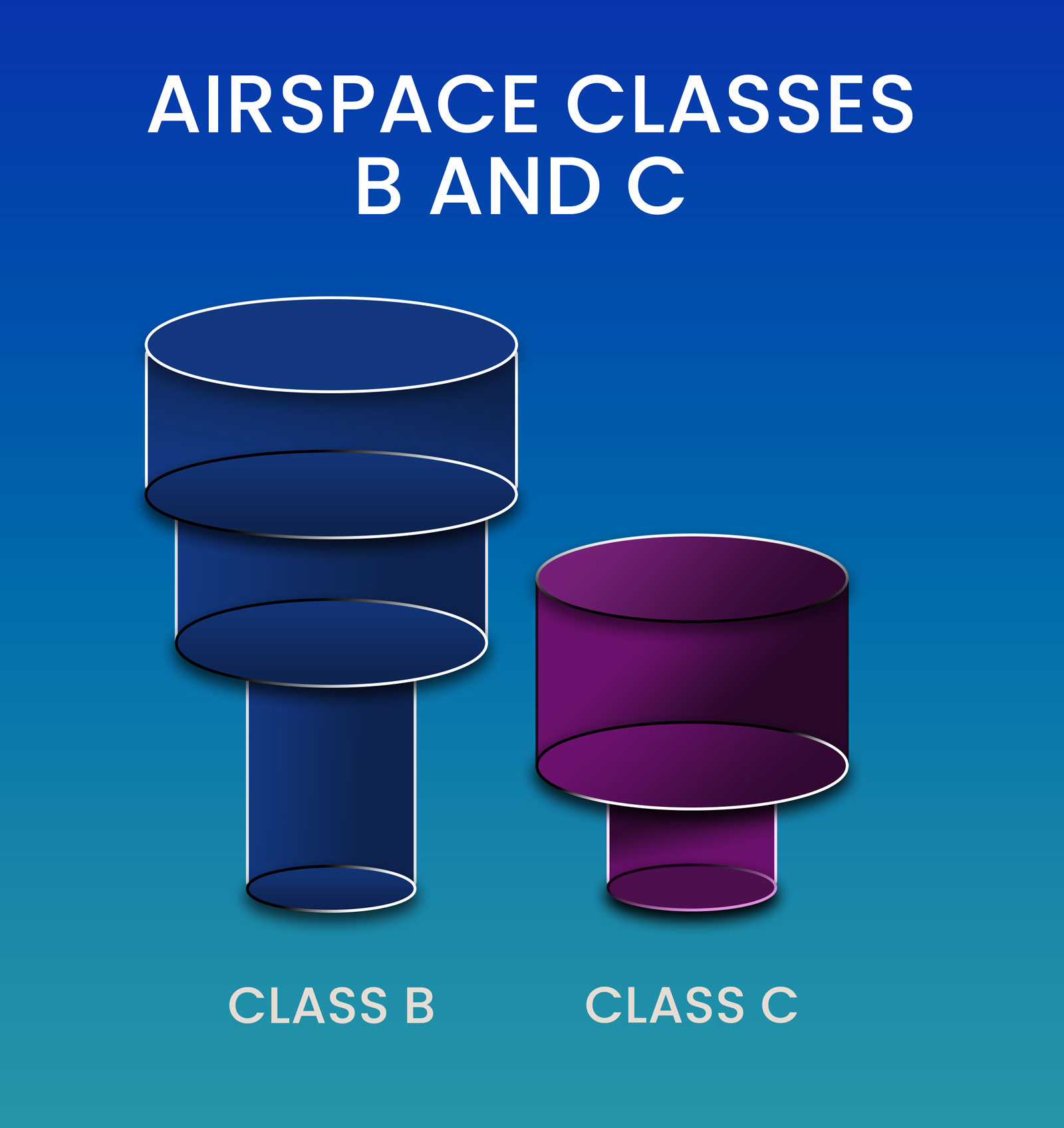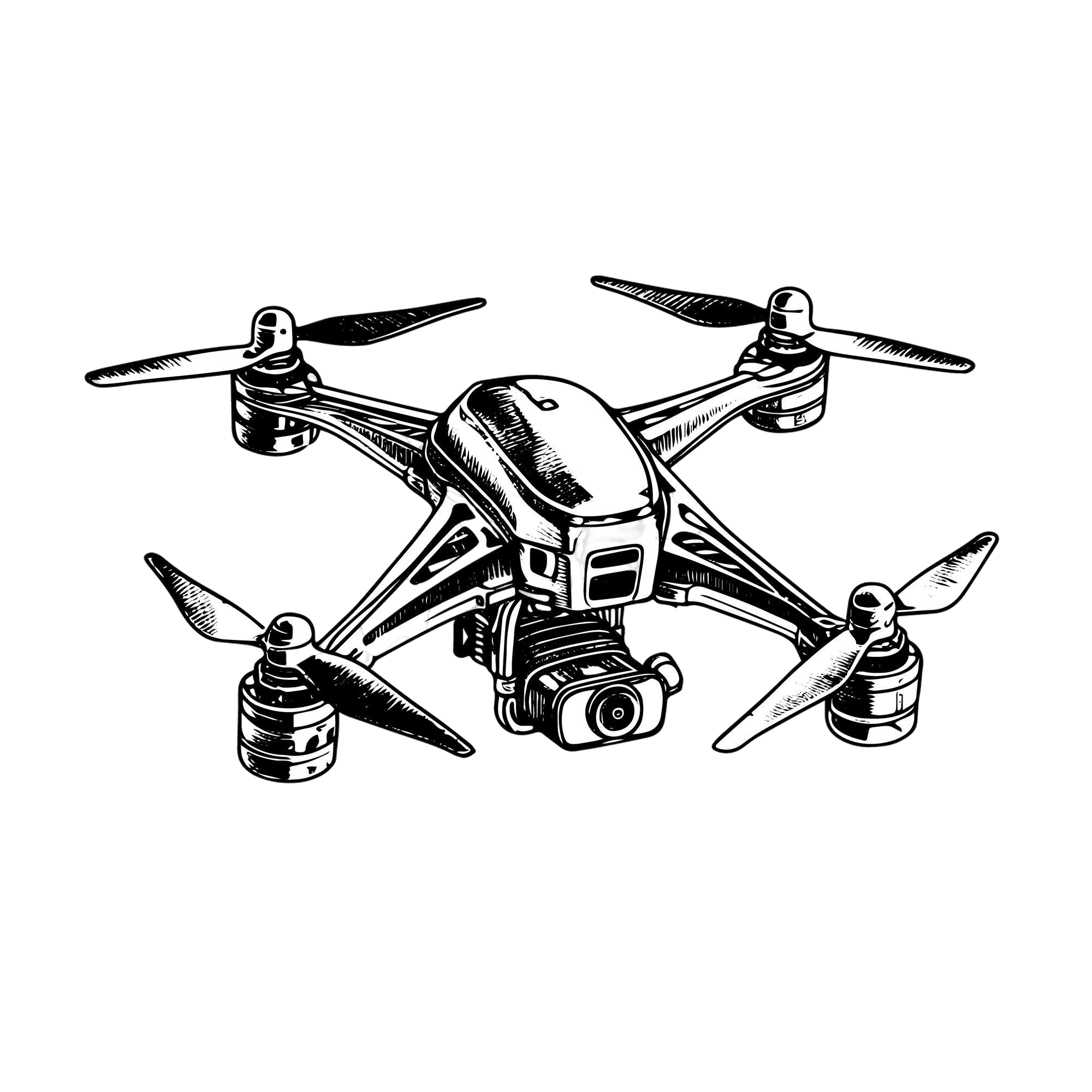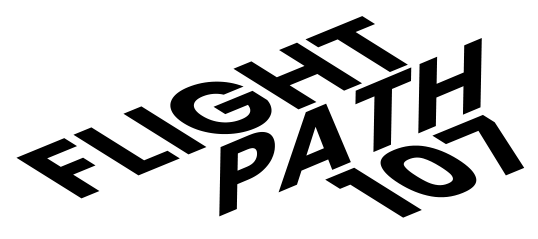
What is an Airspace Class?
If you’ve never heard of “airspace classes,” think of the sky sectioned off into different layers or zones.
Each layer is managed differently based on how busy it is, how close it is to airports, and how much control the FAA needs to keep everyone safe.
These layers are called airspace classes—and they help organize where different types of aircraft can fly and under what rules.
For drone pilots, knowing which class you’re flying in is very important. Some areas require air traffic control permission, some don’t. Some are full of fast-moving planes, others are quieter. Some require specific equipment to fly your drone within that airspace class, and others don’t.
If you fly your drone in airspace that requires authoriztion, you could get into some pretty serious trouble with the FAA, be fined quite a lot of money, loose your drone flying privilidges, and put other pilots and individual in danger.
So before you launch, it’s important to know which slice of sky you’re in.

The 5 Official Airspaces of the USA
Airspace classes around airports are organized by how busy and regulated they are.
Starting with Class B, which surrounds the busiest and most tightly controlled airports, each class steps down in terms of traffic and regulatory requirements until you reach Class G, which is the least regulated and most common across the U.S.
Note: Class A airspace starts at 18,000 feet MSL—well above the altitude limits for drone operations—so it’s not included in this overview.
Here’s a breakdown from most to least controlled, followed by an inforgraphic:
Class B
- Found around major, busy airports.
- Example airports:
- Los Angeles International Airport (LAX)

Class C
- Typically around mid-sized airports.
- Example airports:
- Nashville International Airport (BNA)

Class D
- Airspaces surrounding small airports with control towers, often in less populated areas. Many municipal airports fall into Class D.
- Example airports:
- Santa Monica Municipal Airport (SMO)

Class E
- Covers large portions of the U.S., especially in less busy or rural areas
- Example airports:
- Aspen County Airport, CO (ASE)

Class G
- Covers most of the U.S. at ground level, especially in rural or less developed areas
- Example airports:
- Hagerstown Regional Airport (HGR), Watertown Regional Airport (ATY).


Key Distinctions to Keep Track Of
As we explore the different airspace classes, there are a few key distinctions you’ll want to keep in mind. These will help you understand where you can fly, what permissions or equipment you might need, and how to stay compliant:
- Control Tower Presence – Is there a control tower at the airport?
- ATC Authorization Requirement – Do you need clearance to fly your drone?
- Specialized Equipment Needed – Are you required to have ADS-B, transponders, or other tech?
- Airspace Ceiling – How high and wide does the airspace extend before it transitions into another class?
1. Controlled (Towered) vs. Uncontrolled (Untowered)

Is the airport towered (has an active control tower) or not?
- Why it matters: Towered airports usually have stricter rules and require communication or clearance from Air Traffic Control (ATC). Untowered (non-towered) airports operate differently and may have looser requirements—but situational awareness is still critical.
Controlled Airspace (Towered)
Controlled airspace is regulated by ATC, meaning you must get airspace authorization before entering, including as a drone pilot.
Uncontrolled Airspace (Untowered)
Uncontrolled airspace does not have ATC supervision, which means you don’t need prior permission to fly there. This is typically the case for more rural or less densely populated areas. In these areas, drones can be flown without needing to request clearance from ATC.

Air Traffic Control Clearance and Two Way Radio Requirements
In certain airspace classes, especially around busy airports or in controlled areas, you’ll be required to have a two-way radio to communicate with Air Traffic Control (ATC). This allows ATC to give you clearance to enter, give instructions during your flight, and ensure safe separation from other aircraft.
In less regulated, uncontrolled airspace, like Class G, you won’t need a radio since there’s no ATC oversight. Knowing when and where to use a two-way radio is essential for navigating different airspace types safely and legally.
Specialized Equipment

In some airspaces, manned aircraft are required to have specific equipment like a:
- Mode C transponder – sends the aircraft’s ID to ATC
- ADS-B Out – broadcasts the aircraft’s altitude and position
- Altimeter – measures altitude
These systems are primarily for larger, manned aircraft or certain situations, and most recreational or commercial drones flying under typical conditions don’t need them.

Understanding Surface, Ceiling, and Radius in Airspace Classes
One of the key differences between airspace classes is how they’re shaped vertically and horizontally.
Each class has a defined surface (where it begins), a ceiling (where it ends), and a radius (how far it spreads out horizontally from a central point).
- Surface:
- This refers to the altitude where the airspace starts.
- Some airspace classes begin right at the ground, while others start higher up—either at a fixed altitude or directly above another class.
- Ceiling:
- This marks the upper boundary of a given airspace class.
- For instance, Class D typically starts at the surface and extends up to 2,500 feet AGL (Above Ground Level), where it transitions into Class E airspace.
- Radius:
- This defines how far the airspace extends outward from its center.





